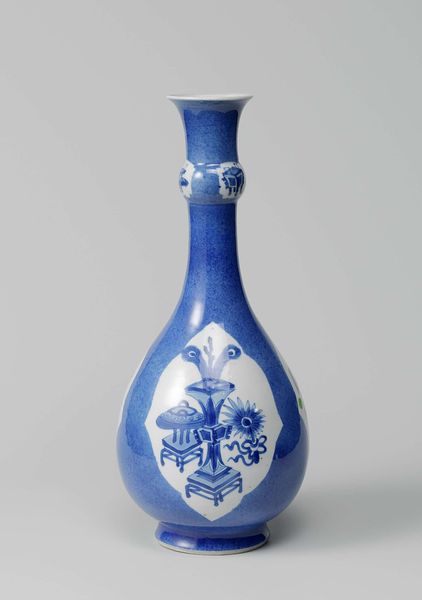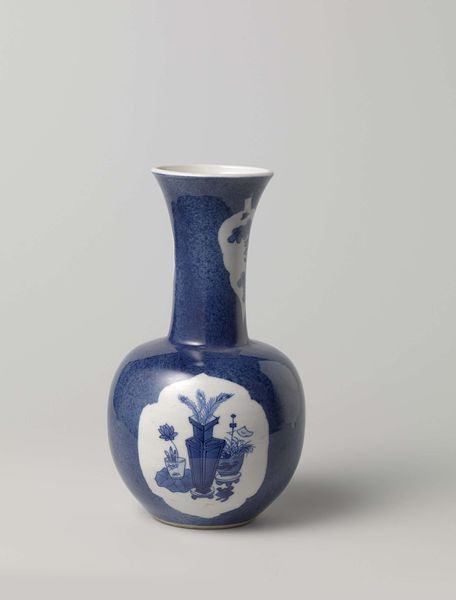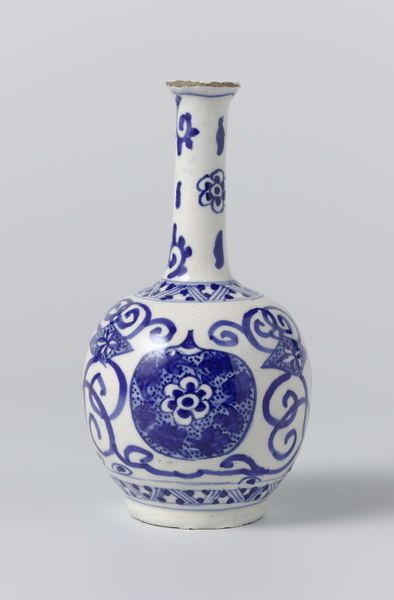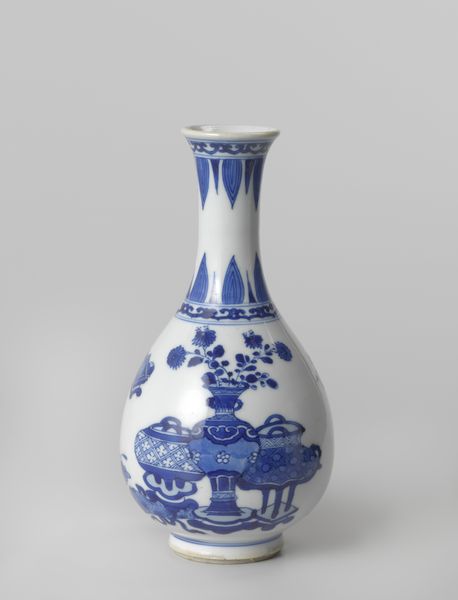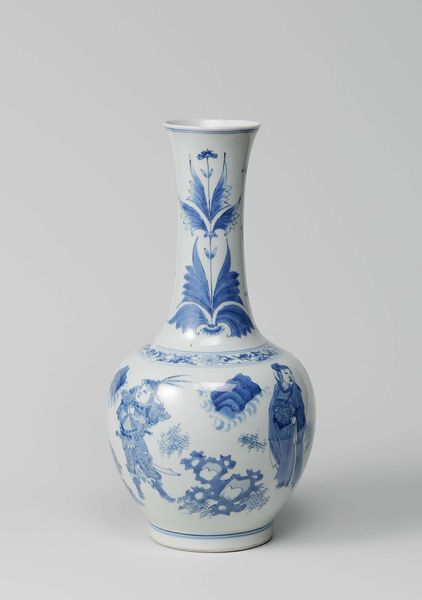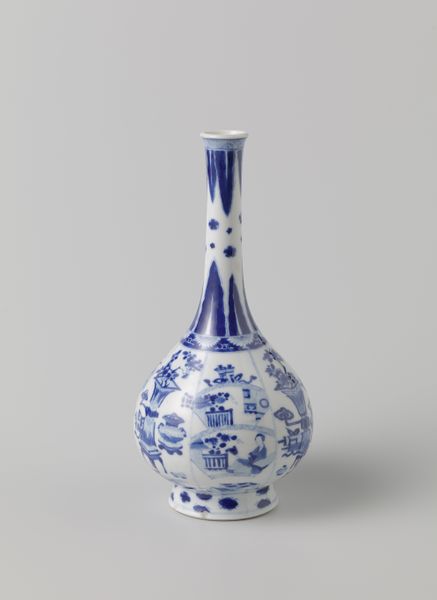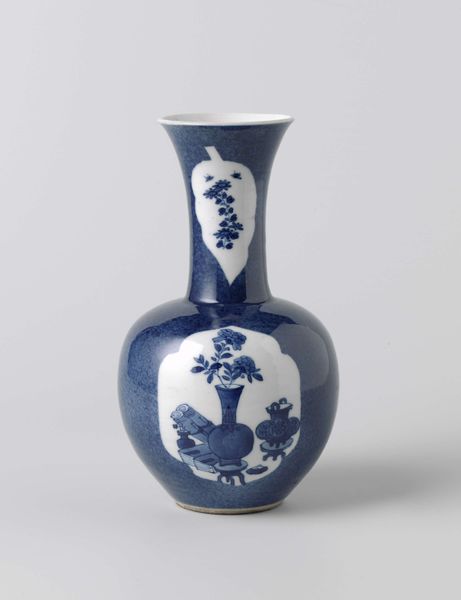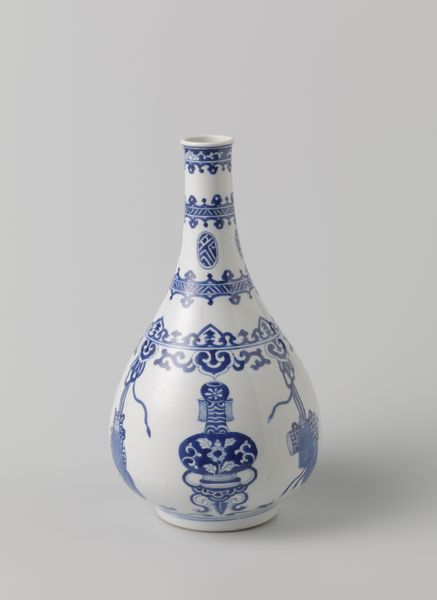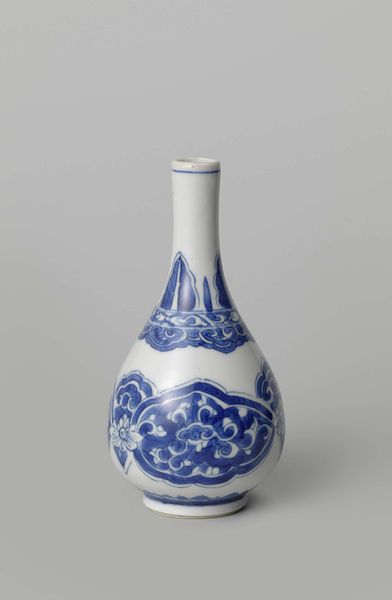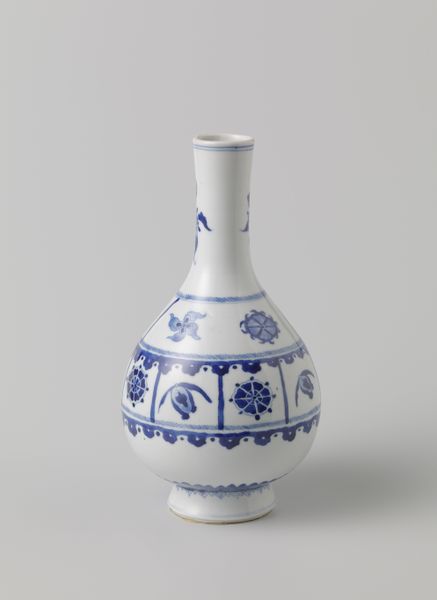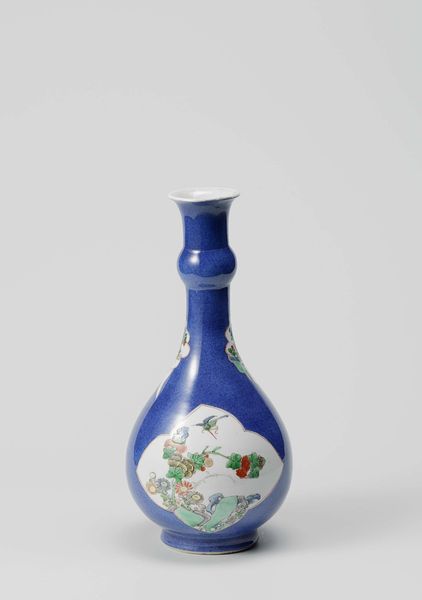
Bottle vase with powder blue, antiquities and precious objects c. 1700 - 1724
0:00
0:00
anonymous
Rijksmuseum
ceramic
#
asian-art
#
ceramic
#
ceramic
Dimensions: height 32 cm, diameter 5.5 cm, diameter 16 cm, diameter 7.8 cm
Copyright: Rijks Museum: Open Domain
Curator: It's remarkable how something as functional as a vase can become such a poignant expression of culture. This piece, titled "Bottle vase with powder blue, antiquities and precious objects," dates back to sometime between 1700 and 1724. Editor: My first impression? Utter tranquility. The cobalt blue is just so enveloping, almost like gazing into a still pond. And the scene depicted feels like a little world contained, quiet and refined. Curator: The artist remains unknown. But what we do know is that it’s currently held in the collection of the Rijksmuseum, made of ceramic and offers a peek into the Chinoiserie craze that swept through Europe at the time. It’s a delightful collision of cultures, really. Editor: Precisely! The "antiquities and precious objects" are coded with symbols and class. There's a conscious dialogue happening between East and West, loaded with privilege. This form of display was aspirational. Curator: You know, what strikes me is how contemporary the color feels. Even centuries later, it still holds this power to capture the eye, a calming quality almost. Editor: Yes, but let's remember who could afford such exquisite beauty back then. These objects spoke volumes about status and the means of cultural appropriation during a period defined by colonial expansion. This piece embodies unequal exchange. Curator: Absolutely, these objects were certainly embedded within the unequal power structures of its era. Although it is gorgeous to look at and demonstrates the beauty that can come from intercultural artistic exchanges, they still exist as beautiful markers of history. Editor: Right, this ceramic bottle serves as a critical mirror, reflecting back the complexities of desire, privilege, and intercultural dynamics, inviting us to consider the stories behind the object. Curator: Exactly. Next time I see a blue and white vase I won't just be thinking about its beauty but everything that went into creating it and how much it means in cultural contexts. Editor: And that's precisely the tension and allure: a seemingly simple, beautiful object holds layers of histories. We are forever implicated by the artwork when it has roots in colonialism.
Comments
No comments
Be the first to comment and join the conversation on the ultimate creative platform.
